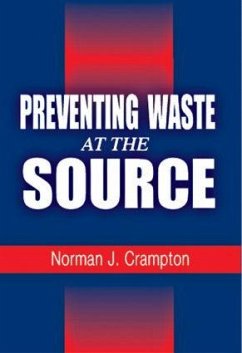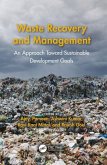The environmental concerns of a corporation don end with the management of toxic and polluting materials: they include the management of materials used in production processes and day-to-day operations - the extra packaging material that can be eliminated...the stuff that ends up in the trash basket and incinerator...everything that can be considered "solid waste." As companies bring their toxic wastes under control, and actually find ways to cut production costs in doing so, they are increasingly turning their attention to managing their waste output by managing their use of materials, and are finding ways to reduce their operating costs in the process. Preventing Waste at the Source: how to Cut Costs by Eliminating Unnecessary Materials is a practical guide to the myraid ways that a business can prevent waste in its operations, manufacturing processes, and day-to-day activities, and reduce operating costs in what can be dramatic ways. Driven by case studies compiled by the Indiana Institute on Recycling under an EPA grant, Preventing Waste at the Source demonstrates how business after business has effectively reduced their solid waste flow. After first presenting a strategic framework to work with, it examines the waste prevention opportunities in each different aspect of a business--the front office, with its paper reduction possibilities; shipping and packing materials; how to work with suppliers and customers to prevent waste; how to measure and report the results of waste prevention initiatives; and what the emerging trends in waste prevention are, and who is practicing them. Each chapter is packed with case studies that show how existing companies have tackled their problems. Each provides a summary of the problem; a run-down of what actions were taken; what the actual or expected pay-back was or will be; and what additional waste has been prevented by the actions taken. These case studies, combined with the chapters on strategies for developing waste prevention programs, make Preventing Waste at the Source a very effective source of practical, on-the-job help for environmental managers, plant managers, manufacturing and quality engineers, and non-managerial employees with responsibilities in waste management and reduction. TOC:Waste Prevention And Your R.O.I.- How To Think About Waste Prevention.- Organizing For Action.- The Front Office: A Highly Visible And Easy Target.- Gaining Better Control Of Pallets, Cardboard & Stretch Film.- Converting From Disposable To Returnable-Reusable Packaging.- Teaming With Suppliers And Customers To Prevent Waste.- Measuring And Reporting The Results Of Waste Prevention.- Retail Packaging: Classic Cases.- Moving Toward Zero: Back To The Future.
Hinweis: Dieser Artikel kann nur an eine deutsche Lieferadresse ausgeliefert werden.
Hinweis: Dieser Artikel kann nur an eine deutsche Lieferadresse ausgeliefert werden.








